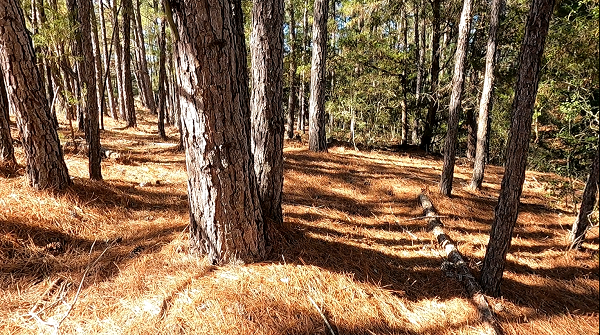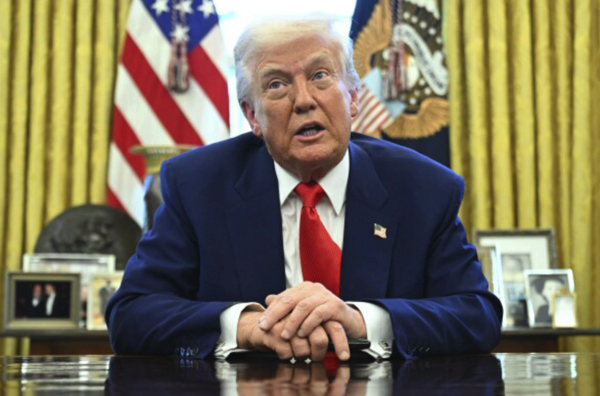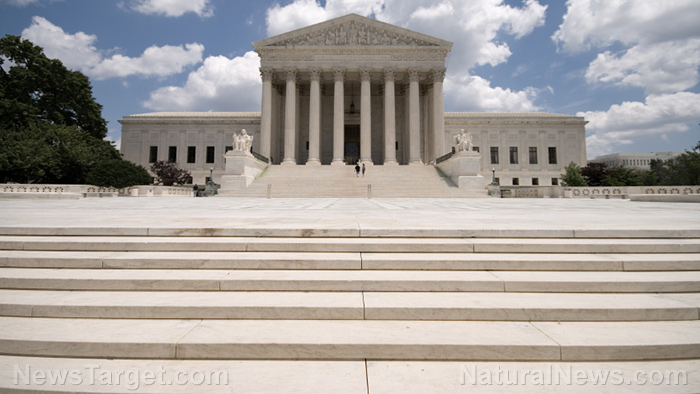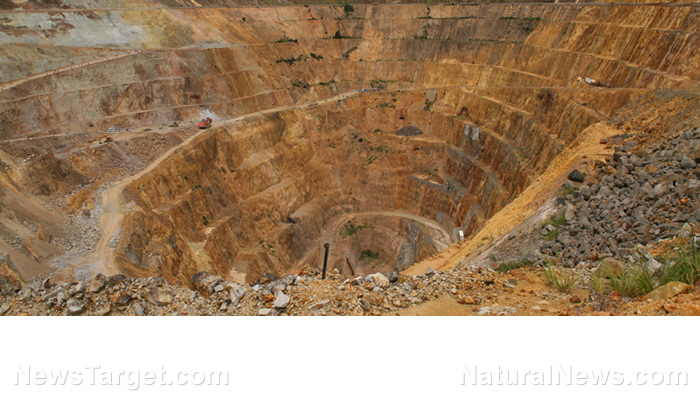 Parler
Parler Gab
Gab
- President Trump’s March 1, 2023, executive orders aim to boost U.S. timber production and address national security concerns.
- The orders highlight the need for active forest management, including controlled burns and logging, to reduce wildfire risks.
- Environmental groups oppose the orders, claiming they harm forests, but supporters argue that these practices are essential for forest health and public safety.
The economic and environmental case for active forest management
The first executive order tackled the nation's reliance on imported lumber, a dependency that has grown since 2016, despite the U.S. having ample timber resources. The President emphasized that wood products play a "vital role in key downstream civilian industries, including construction." The economic impact of this reliance became starkly evident during the COVID-19 pandemic, when the producer price of softwood veneer and plywood manufacturing skyrocketed from $205 in January 2020 to $702 in June 2021. By December 2024, the price remained higher than the pre-pandemic peak, devastating the home-building industry and keeping construction costs artificially inflated. The second order, calling for the immediate expansion of U.S. timber production, is a beacon of hope for the logging and construction industries and for home buyers. This shift in policy is a return to the wisdom of indigenous communities, who managed American forests with fire for millennia. Logging and controlled burns have been under attack since the Wilsonian "Progressive" Era, leading to overgrown forests that are prone to catastrophic wildfires. The result has been an ever-increasing threat to property, human and animal lives, and environmental damage, including air pollution, water pollution, and loss of habitat and species.The historical context of forest management
The market-focused environmental nonprofit PERC (Property and Environment Research Center) has long urged the nation to "Fix America’s Forests," which are "in trouble" due to a century of fire suppression that has disrupted natural fire cycles and impaired forest health. Trees in national forests are dying from insect infestations, drought, and disease caused by overly dense forests. PERC’s solution is to reduce existing regulatory hurdles and find more creative funding approaches for active forest management, including prescribed fires and mechanical thinning. Keith Schneider of the water newsroom Circle of Blue noted that Trump’s forest management plan boosts logging on federal lands, increases tariffs on Canadian lumber, and expedites timber approvals to reduce wildfire risks and support the U.S. timber industry. The White House contends that the inability to fully exploit domestic timber resources has impeded job creation, contributed to wildfire disasters, degraded habitats, increased construction and energy costs, and threatened economic security.The battle over forest policy and the demise of harmful environmentalism
Well-funded environmental groups immediately decried the Trump policy, claiming it increases the human imprint on "sacred" forest lands. Inside Climate News called the order "an assault on the nation’s public forests" that "removes protections" and will destroy massive swaths of older, fire-resilient trees. Danna Smith, executive director of North Carolina’s Dogwood Alliance, called the Trump order "absolutely the wrong direction and a devastating blow." Even as wildfires raged in the Carolinas, killing trees and wildlife, Smith claimed that selective logging and removal of dead trees would harm "standing forests" that are vital to fighting the climate crisis. The irony of these claims is not lost on those who have witnessed the tragic consequences of the failed federal policies of the past. For example, in Botania, Chile, a community that prepared for wildfires by clearing dead vegetation and creating defensible spaces remained intact while neighboring areas were devastated. "Despite being surrounded by fire, amidst the voracious chain of fires that in early February claimed the lives of 132 people in the Valparaíso region, the Botania neighborhood in Chile remained intact: the flames did not touch any of the houses," reported a local news outlet. In contrast, areas where owners resisted vegetation pruning saw 250 houses razed by the fire.A new era of forest management
To oversee this dramatic change in federal forest policy, Trump appointed Tom Schultz, a widely respected forestry expert, to head the Forest Service. One of Schultz’s tasks is to enable shorter time frames for evaluating logging plans for their impact on endangered species. This move is crucial for addressing the immediate threats posed by overgrown forests and for supporting the economic well-being of communities that depend on forest resources. The Trump administration’s forest management strategy is not without precedent. In January 2019, the President issued an order requiring the Interior and Agriculture Departments to collaborate with state, tribal, and local partners to create a comprehensive wildfire strategy. This strategy prioritized the highest-risk lands, reduced hazardous fuel loads, and ensured the safety and stability of local communities. By fiscal year 2020, the Department of the Interior had reduced wildfire risk across 1.5 million acres, a 49% increase over the four-year total during Obama’s second term. In April 2020, Interior Secretary David Bernhardt signed a final decision to construct and maintain a system of up to 11,000 miles of strategically placed fuel breaks to control wildfires within 223 million acres of federal lands in Western states. The Bureau of Land Management’s assessments showed that 79% of fuel breaks were effective in controlling wildfires, and 84% helped change fire behavior for the better.Choosing a better path forward
An early test of the Trump forest policy is playing out in San Bernardino, where Agriculture Secretary Brooke Rollins issued an emergency order to increase timber quotas in America’s national forests by 25%. Opponents claim the order is a "land grab," but the U.S. Forest Service warns that charred portions of the forest burned in the Eaton Fire remain at "significant" risk of debris flows, flooding, and mudslides. Streamlining permits for increased logging will help "achieve relief from threats to public health and safety, critical infrastructure, and/or mitigation of threats to natural resources." The debate over forest management is not just about environmental policy; it is about the safety and economic well-being of communities. The relatively small population that lives in these areas has little political clout but knows what needs to be done to protect their environment. However, "environmentalists" who live in urban centers and fund groups like the Sierra Club often block attempts to manage the forest by removing dead and overgrown trees, leading to tragic losses of life and property. As the global community grapples with environmental degradation, embracing natural processes like controlled burns and sustainable logging is crucial. By reassessing traditional methods and adopting a more holistic approach to forest management, we can create a safer, healthier, and more sustainable future for both humans and the natural world. Is it time to prioritize practical solutions over ideological battles in the fight against wildfires? Sources include: Whatsupwiththat.com TownHall.com Enoch, Brighteon.aiManufacturing surge under Trump sparks optimism amid concerns over economic strains
By Willow Tohi // Share
Supreme Court weighs birthright citizenship restriction amid claims of executive overreach
By Willow Tohi // Share
Trump’s critical Ukraine minerals deal nears completion
By Cassie B. // Share
Trump administration proposes drastic cuts to State Department, axing funds to UN and NATO
By Lance D Johnson // Share
Florida sky mystery: Toxic heavy metals and bioengineered particles found in air and food samples
By finnheartley // Share
Omega-3s: a powerful ally in the fight against chronic inflammation
By ljdevon // Share











